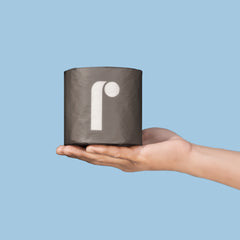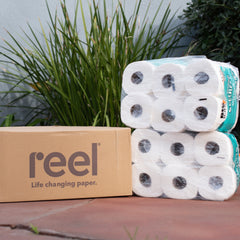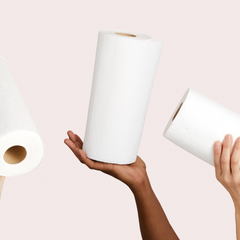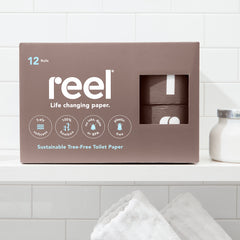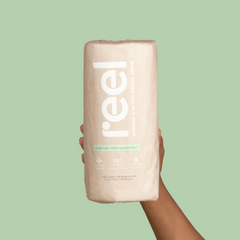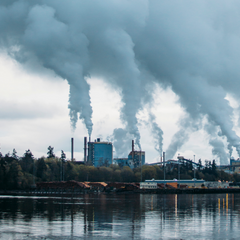Our Mission
Quality and convenience are expected in today's world, but until recently we hadn’t fully considered the impact of some of these luxuries. Take paper goods - we use them everyday and they are traditionally made by cutting down trees in healthy forests. This action, for something as small as paper, has massive ripple effects on the planet.
At Reel, we're on a mission to change the paper industry. We've reimagined what paper could be, creating products that are better for the planet and still deliver the premium quality and convenience you expect.
The Root of the Problem
What are the ripple effects of deforestation and why is paper setting a bad example? Let’s take a closer look.
Reel Solutions
At this point, it should be clear that we can’t continue down the path we’re currently on. There has to be a better way. Thankfully, we have options—and they don’t require any significant lifestyle changes. We can all continue to enjoy the comfort and convenience of toilet paper and paper towels; we just need to be a little more creative in how we make them. Here's how we do it:
Here's how we do it:
Source of Deforestation
Like most paper products, traditional toilet paper and paper towels are made from wood fiber. Harvesting that wood fiber means cutting down trees—lots and lots and lots of trees.
Traditional toilet paper production alone destroys as many as 27,000 trees per day,which equals nearly 10,000,000 trees per year. A healthy forest has around 50 trees per acre, which translates to roughly 200,000 acres of trees per year lost. That’s an area the size of New York City (Manhattan and all other boroughs combined) lost. Every. Single. Year.
Global Warming
While deforestation leads to a whole host of issues, we want to focus on how it contributes to climate change. Here’s the problem, in brief:
Through photosynthesis, plants—especially trees—sequester (i.e., remove) carbon dioxide from the air, storing it inside themselves and the surrounding soil.
When trees are cut down, the carbon they’ve sequestered is released into the air—also known as carbon emissions.
Carbon emissions are concerning because carbon dioxide is what’s known as a greenhouse gas. CO2 traps heat in the lower atmosphere, raising temperatures and fundamentally changing climates worldwide.
The more trees we cut down, the less carbon they’re able to sequester—and the more carbon they’re releasing back into the atmosphere, creating a devastating double whammy effect.
Smart Sourcing
At this point, you might be wondering, “Aren’t trees a renewable resource? Can’t we just plant more?” Well, they are, and we can, but there are a couple of caveats: time and space. Once planted, it can take up to 100 years for a tree to reach maturity. For replanting to be a viable solution to deforestation, forests would have to grow at the same rate we’re consuming them—and that math just doesn’t work out.
Even if time weren’t a factor, we’d still be up against the limits of physical space. It’s not as though we’re sitting on millions of acres of unused land that we could be planting trees on. We have a finite amount of space on this planet, and we can’t create significantly more room for trees without repurposing land that’s already serving a different function. And that problem is getting worse by the day as we continue to level forests to make room for human settlements and livestock.
Single-use Paper
That brings us to the topic of reusability. Some things made from wood can serve a valuable purpose for years, decades, or even centuries—think buildings and furniture. Others, like printer paper, might have much shorter functional life spans—only being“used” once—but they can be recycled. Then we have what is known as single-use products—like toilet paper and paper towels.
For various reasons, toilet paper and paper towels can’t be recycled. They’re used once and then flushed down the toilet or thrown in the trash, never getting the chance to serve any other purpose. And that’s the real tragedy here; for all its hygiene and convenience benefits, traditional toilet paper is an incredibly inefficient—almost wasteful—use of a precious natural resource.
Sea Of Plastic
Traditional toilet paper and paper towels’ excessive use of wood isn’t the only issue to be addressed. Among other concerns, we must consider the impact that shipping and transporting such a high-volume product has on the environment (more on that later). And then there’s the packaging.
Many of the products we purchase on an everyday basis—including traditional toilet paper and paper towels—come wrapped in clear plastic. Companies do this for several reasons: it’s cheap to produce, keeps products clean, and allows consumers to see what they’re buying. Unfortunately, while plastic can be created quickly, it takes a very long time to decompose—potentially over 500 years.
And while most plastic is technically recyclable, the transparent plastic film most toilet paper and paper towels come wrapped in isn’t accepted by most curbside recycling services; it has to be dropped off at a separate location, like a grocery store. As a result, only an estimated 2% of plastic film is recycled. Instead, it ends up in landfills—or in our oceans—where it sits for the vast majority of its very, very long life, creating a whole host of ecological problems.
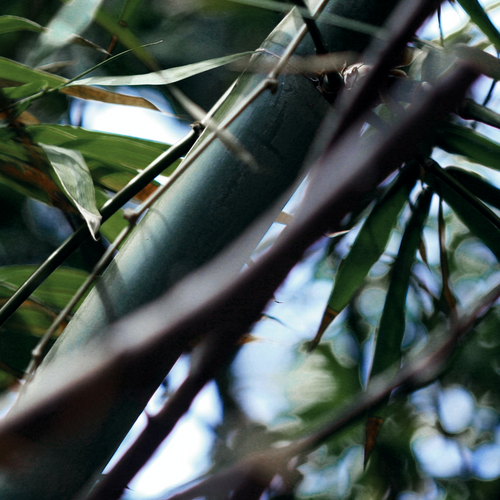
Bamboo Is Better
In fact, bamboo is one of the fastest-growing plants on earth. Which means rather than cutting down 100 year old trees to make paper, we can use bamboo which grows back in 3-5 years. It also grows back from the same root once harvested, so it causes less damage and erosion to the ecosystem, making sustainable forestry a possibility. While bamboo is different from trees in a lot of ways, they also share some of the best qualities, including sequestering large amounts of carbon and making soft, strong paper goods.
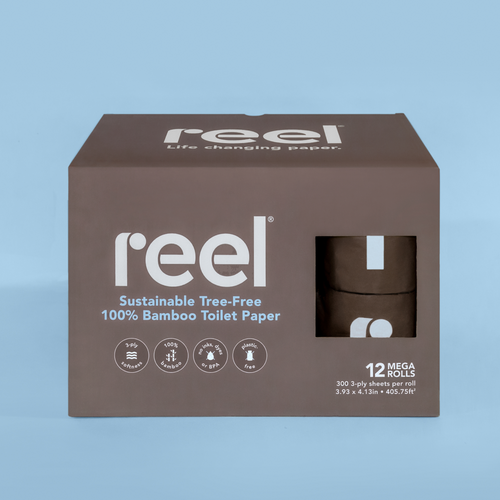
No Plastic, Fantastic
When you picture the paper aisle at the store, what do you see? We see a lot of plastic. Using more sustainable materials to make our paper is only part of the equation. Our sustainable paper goods are packaged and shipped in eco-friendly materials and come wrapped in 100% recyclable paper. We’re committed to packaging that is sustainable, biodegradable, and, yes, plastic-free.
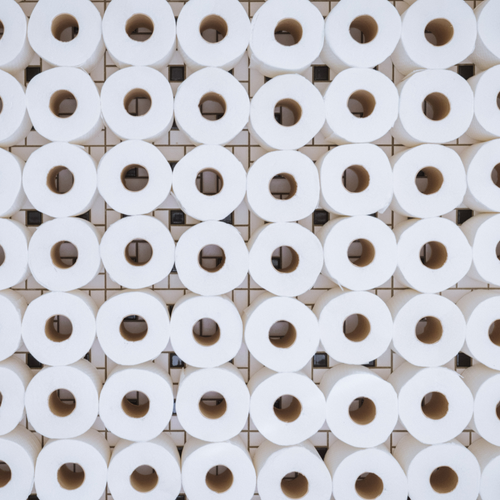
Recycled Paper - What’s Old Is New
But bamboo isn’t our only option, there are other alternative fibers, such as recycled fiber, that can be used to create sustainable paper goods. Our recycled paper products use only premium, recycled material (minimum 80% post-consumer fiber) sourced from places like offices and schools. By turning this discarded paper into a recycled paper towel it gives it a another product lifecycle and makes better use of our trees.
Our recycled paper fibers are also sourced exclusively from North America and made right here in the USA.
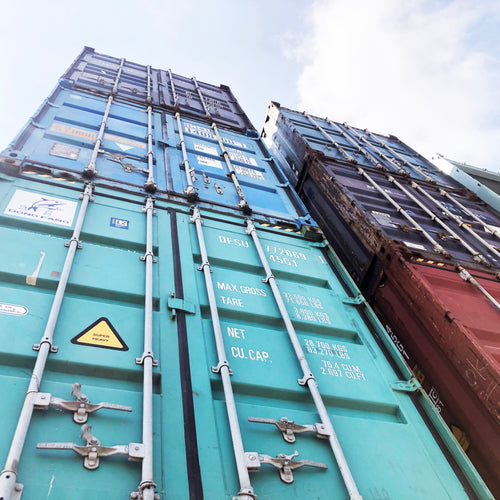
Going the Extra Mile
While bamboo is an excellent substitute for regular toilet paper, it introduces some challenges—namely, overseas shipping. That’s why Reel offsets 100% of the carbon emissions produced in overseas transportation through our partners Flexport and the Carbonfund.org Foundation.
Hopefully, as more consumers express interest in bamboo-based products, less-distant sources will rise to meet that demand; in the meantime, we’re doing our part to minimize our footprint.
Our Sustainability Journey
We've come a long way - but we still have a ways to go. We're committed to constantly improving our practices and products to be better stewards of the environment.
